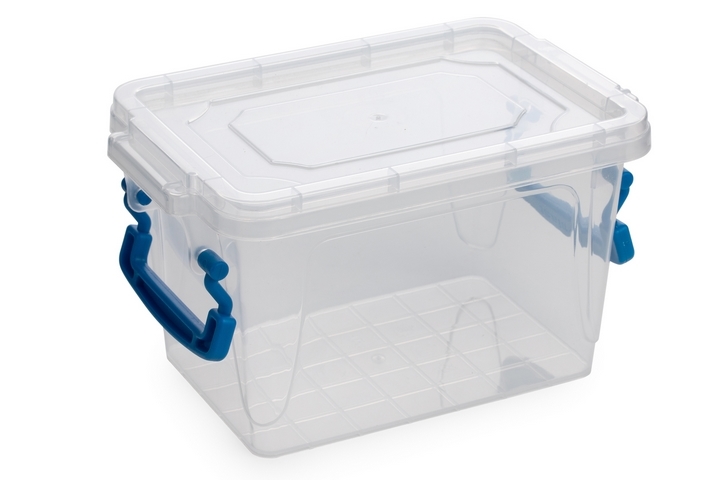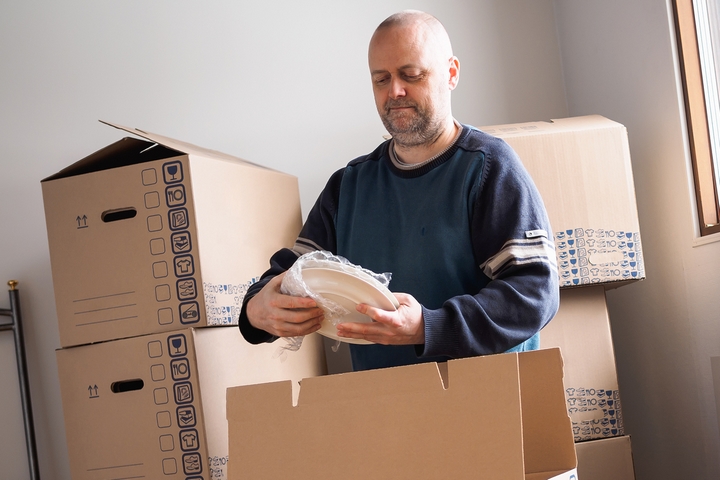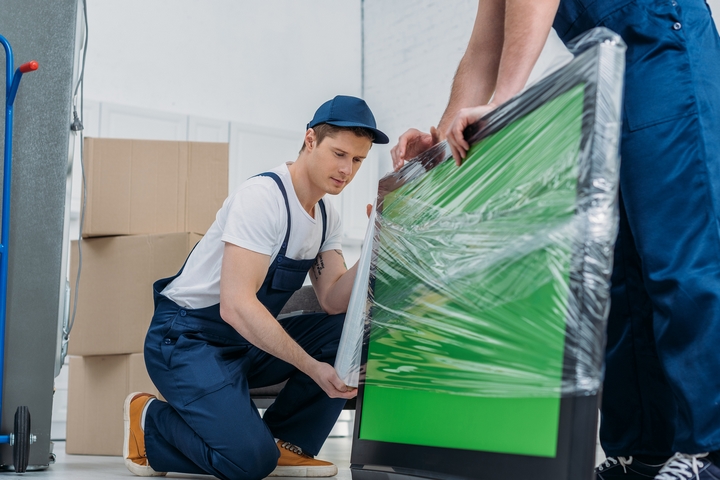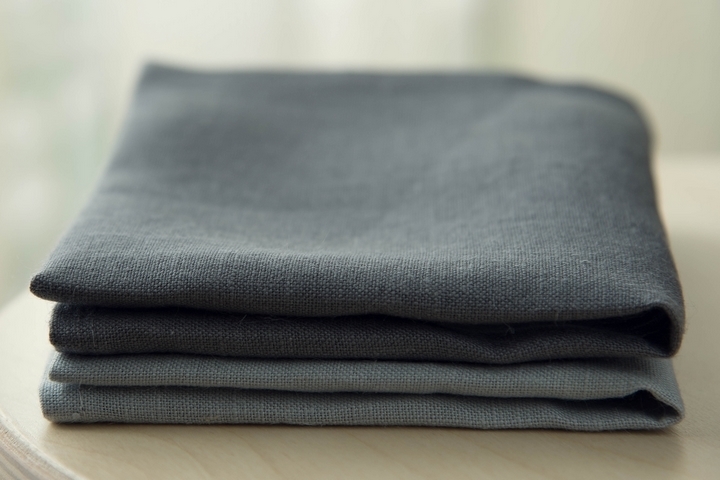
Winter is a tricky season for moving houses. With the snowy weather and the icy surfaces, you must take extra precaution with every step of the moving process. From weatherproofing your boxes to safeguarding your items, moving in the winter can be more challenging than any other time of the year.
Despite the extra layer of complexity, a winter moving day can still go smoothly for prepared homeowners working with professional movers. A key component of your success rests in how you pack your moving boxes. As long as you are careful and strategic with your packing techniques, moving in the winter doesn’t have to be too stressful at all.
If you are planning to move during this season, follow these eight winter packing tips to maximize your success for moving day:
1. Pack sensitive items in plastic boxes and containers.

During winter moves, it’s essential to protect your items against the damages of moisture and cold temperatures. In the inclement weather, old boxes and shabby packing materials will not keep your items safe. You need to use quality packing supplies made with waterproof materials. For items with a high risk of water damage, consider placing them inside plastic moving boxes. The plastic containers can be more resilient against wet conditions than cardboard boxes.
Similarly, small delicate items should be placed inside waterproof plastic bags. Make sure you seal the bags properly before packing them into the boxes.
2. Protect your dishes and glassware from the winter cold.

Ceramic, china, and glassware are prone to cracking in extreme cold temperatures. For this reason, you should add padding to provide insulation against the cold. Wrap every sensitive item in bubble wrap, thick padding paper, and towels in order to keep them warm.
You should also limit the amount of time your dishes and glassware spend in the cold moving vehicle. Save those moving boxes to be loaded last, and make sure they are removed from the vehicle before any others.
3. Safeguard your books from the winter weather.

Books may look sturdy, but they can be easily ruined when exposed to the cold and damp climates. If you leave the books in the cold temperature for too long, their physical conditions will deteriorate until the pages turn brittle and wrinkled. Try to keep your books as warm as possible by minimizing their time inside the cold moving vehicle.
Also, consider wrapping your books in bubble wrap, plastic wrap or plastic bags. If a box breaks and the books spill into the snow, they are still protected from being drenched by slush.
4. De-ice the driveways and walkways.

The surfaces can become slippery during winter. You want to avoid the dangerous scenario where anybody slips and falls from the ice, especially as your items are being transported. Make sure the path between the moving truck and your home is as safe as possible. If there is any snow or ice, clear the pathway before the professional movers arrive.
To avoid the build-up of ice or snow, you should pour some salt on your driveways and walkways on the previous night. This will prevent ice build-up during a particularly cold winter morning on the next day.
5. Shorten the loading and unloading time.

During winter, ensure the moving truck is close to your entrance to make the loading process quick and efficient. The closer the moving truck is to your house, the less the distance you have to walk for transporting the items. This will minimize the chances of your items being exposed to the unpleasant weather.
You can also make the loading and unloading time shorter by creating a makeshift assembly line. Position one person near the moving truck, another person inside the house, and one more person to trek from the home to the truck. As they pass the boxes to each other, the items can be loaded and unloaded onto the vehicle faster.
6. Offload the moving truck as quickly as possible.

Winter is not the season to dawdle at a slow and leisurely pace. You should move carefully, but with a sense of urgency. Once you arrive at your destination, don’t keep the items inside the moving truck for longer than necessary. Unloading your items as soon as possible allows the items to get acclimatized in the new home, which will have much warmer temperatures.
In addition, make sure the utilities in your new home are working before arrival. These include electricity, water and gas. Heating is critical, especially when offloading any temperature-sensitive items into your new house.
7. Be careful when moving electronics in the winter.

Your valuable electronics are especially susceptible to the winter weather. That’s why you should ensure all your electronics are safely secured inside boxes, preferably within plastic containers. In addition, give them an extra layer of protection by wrapping the electronics in plastic coverings and bubble wrap. Doing this will protect your electronics from smashes, spills, and snow.
In addition, you need to be careful when bringing a piece of electronic equipment from the cold temperature into a warm room. If the electronic equipment has been left in the cold for too long, the sudden temperature change may cause condensation inside the item. Instead, allow the device to warm up for several hours before plugging them in.
8. Have blankets, towels & sheets ready on hand.

During your moving day, snow could start pelting down at the most inopportune moments. To give your belongings some form of protection, you should make use of any towels, blankets or sheets. Have these items placed near the front door, which allows you to grab them whenever they are needed.
